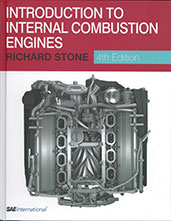Technical Paper
Comparison of Regulated Emissions and Particulate Matter of Gasoline/CNG Dual-Fuel Taxi Over New European Driving Cycle
2014-04-01
2014-01-1467
Compressed natural gas (CNG) is widely used as an alternative option in spark ignition engines because of its better fuel economy and in part cleaner emissions. To cope with the haze weather in Beijing, about 2000 gasoline/CNG dual-fuel taxis are servicing on-road. According to the government's plan, the volume of alternative fuel and pure electric vehicle will be further increased in the future. Thus, it is necessary to conduct an evaluation on the effectiveness of alternative fuel on curbing vehicular emissions. This research examined the regulated emissions and particulate matter of gasoline/CNG dual-fuel taxi over New European Driving Cycle (NEDC). Emission tests in gasoline- and CNG-fuelled, cold- and warm-start modes were done for all five taxies. Test vehicles, Hyundai Elantra, are powered by 1.6L spark-ignited engines incorporated with 5-gear manual gearboxes.

